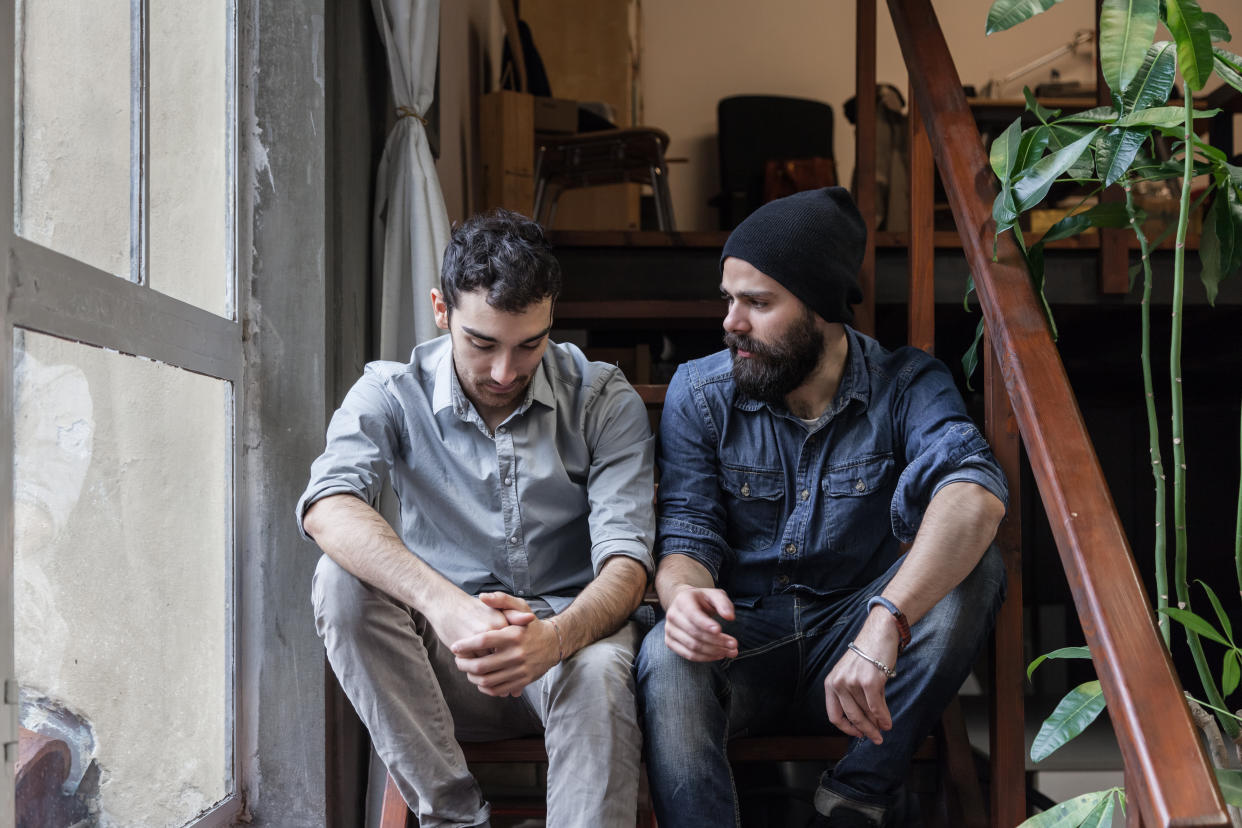Are there really five stages of grief?

Grief, in all its complexities, is a part of many people's lives, or an inevitability of the future.
Yet, it's something we're only recently starting to talk about more openly as a society. And with that, comes questions about what we think we do and don't know about it. One thing we know for sure, is that grief looks different for everyone, and regardless of the situation, everyone's experience is valid.
But while we may want to welcome anything that helps us make sense of the changing emotions of grief, more experts are encouraging us to focus less on the well known five stages of grief theory.
Here, BACP-registered counsellor Georgina Sturmer helps us explore whether there really are five stages (also known as the Kübler-Ross model), how grief theory has evolved, and with what mindset we should view it instead (clue, it's not linear).
What are the five stages of grief?

"Elizabeth Kubler-Ross developed the five stages of grief model in 1969 as a way to support people who had been diagnosed with a terminal illness. It offers a roadmap of five different stages that we might expect to go through as we grieve: denial, anger, bargaining, depression and acceptance. Kubler-Ross described the model in her work On Death and Dying and it was taken on more widely as a model for grief in general," explains Sturmer.
Why has the theory stuck for so long? "It’s human nature to seek an explanation for our feelings, and a roadmap for coping. This theory offers us a way to understand our feelings if we are grieving, or to try to support someone else who is grieving," she adds.
"It also suggests that our experience will be linear, that we will progress through our grief. This offers a sense of hope, as if we might find a light at the end of the tunnel."
How useful is the theory?
"When we are plunged into grief, we might feel emotionally or physically overwhelmed by everything that’s happening around us. This theory offers us a tool to guide us to understand and make sense of our feelings. The model has also brought the language of grief into everyday parlance. This is incredibly helpful, as it shows us that it’s acceptable to grieve, and to talk about grieving, rather than trying to hide it all away," Sturmer acknowledges.
"That said, there’s a risk to any theory that suggests a linear, or a 'one size fits all' approach. The reality is that life doesn’t take us through a linear set of emotions. And we will all cope with our own grief in different individual ways. When a theory presents a framework like this, there’s a risk that we might feel frightened or embarrassed or distressed if our own grief – or the grief of a loved one – doesn’t follow this neat progression."
The reality is that life doesn’t take us through a linear set of emotions. And we will all cope with our own grief in different individual ways
How has grief theory evolved?

Since 1969, Sturmer explains, "Grief is now viewed as a part of life, rather than a process that we need to undergo or complete in some way."
Grief is now viewed as a part of life, rather than a process that we need to undergo or complete in some way
"Tonkin’s Model of Grief, for example, describes how we grow 'around' our grief. It remains the same, and we don’t need to expect it to disappear or diminish. Rather, we learn to grow around it and to develop our own coping strategies. I really like this idea, as it makes it acceptable for us to imagine living our life, without diminishing the memory of the person that we have lost, or feeling guilty about 'moving on' in some way. Our grief and our life can coexist.
"In addition, Continuing Bonds theory normalises the idea that we can continue to have a bond with someone after they have died, and this can help us to cope with our grief.
"The Dual Process model describes how we oscillate, or move between, two main different types of tasks when we are grieving. Practical tasks, and emotional experiences. Different people will have a different balance at different times."
Navigating 'acceptance'

As mentioned, there is less focus now on striving towards acceptance. So what did Kübler-Ross actually mean when she talked about acceptance?
"In fact," says Sturmer, "in Kübler-Ross' words from her book On Grief and Grieving it's about 'accepting the reality that our loved one is physically gone and recognising that this new reality is the permanent reality'. The book goes on to say that ‘Acceptance is not about liking a situation. It is about acknowledging all that has been lost and learning to live with that loss… Acceptance is a process that we experience, not a final stage with an endpoint'."
Over time, the theory grew with a more simplistic version of acceptance. "The challenge is that a lot of us take the word 'acceptance' at face value. When we hear acceptance packaged up as the fifth stage of grieving, there’s a simplistic interpretation that it’s meant to be an end point. When we can dust ourselves off and start afresh."
This is why it's important to adopt a nuanced understanding of acceptance, if thinking about it all. "My reflection on all this, is that we don’t need to strive towards 'acceptance' in the sense of closing a book and moving on with our lives. But it does feel that Kübler-Ross had a more nuanced version of acceptance in mind. One that sees us acknowledging the reality of what has happened. Even if we continue to feel anger, despair, frustration or sadness."
Also highlighting the role of 'protest' in grief, Sturmer adds, "Sometimes in grief, we experience a complete refusal to acknowledge what's happened. This is sometimes seen as a 'protest', a sense that we don’t want to acknowledge what’s happened or the feelings that we might uncover if we begin to connect with our grief."
Why does grief look different for everyone?

"We are all shaped by our life experiences. So when we lose a loved one, the way that we grieve is individual too. Our beliefs, our upbringing, our relationships, our life circumstances, the circumstances leading up to our bereavement, these will all have an impact on how we grieve," Sturmer emphasises.
For advice on how to support someone who has lost a loved one, you can visit the councillor's blog post. And for supporting someone who is terminally ill? "There’s no roadmap for this, as everyone will have different needs. And maybe that’s the most important part. Don’t make assumptions about what will be helpful. Instead, spend time attuning to what’s going on for them, and what kind of support they might need on any given day."
For contact details of a range of Bereavement support services, visit this Marie Curie page. If you need someone to talk to, you can call Samaritans on 116 123 any time, day or night.
Read more: How to cope with grief as Kate Garraway confirms death of Derek Draper(Yahoo Life UK, 7-min read)
Read more: Michael Palin says he felt ‘lopsided’ after death of his wife: How to cope with male grief (Yahoo Life UK, 5-min read)
Read more: Living with Li-Fraumeni syndrome: 'I've had cancer twice and lost three family members to the disease' (Yahoo Life UK, 10-min read)
Watch:Regina King feels like a 'different person' as her grief evolves after the death of her only son


